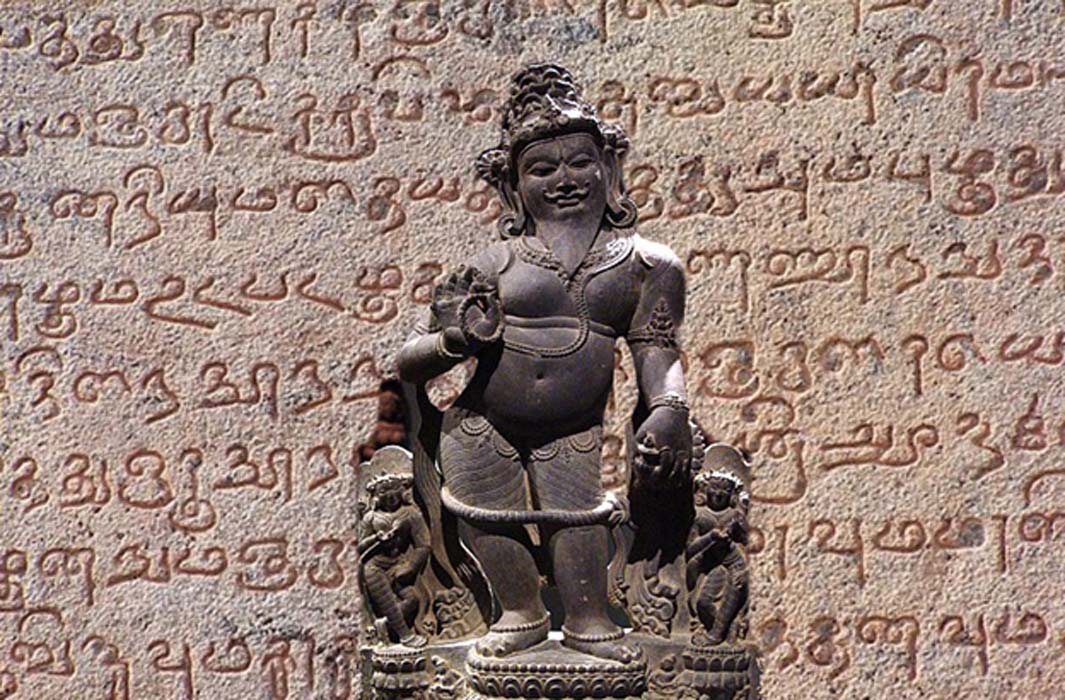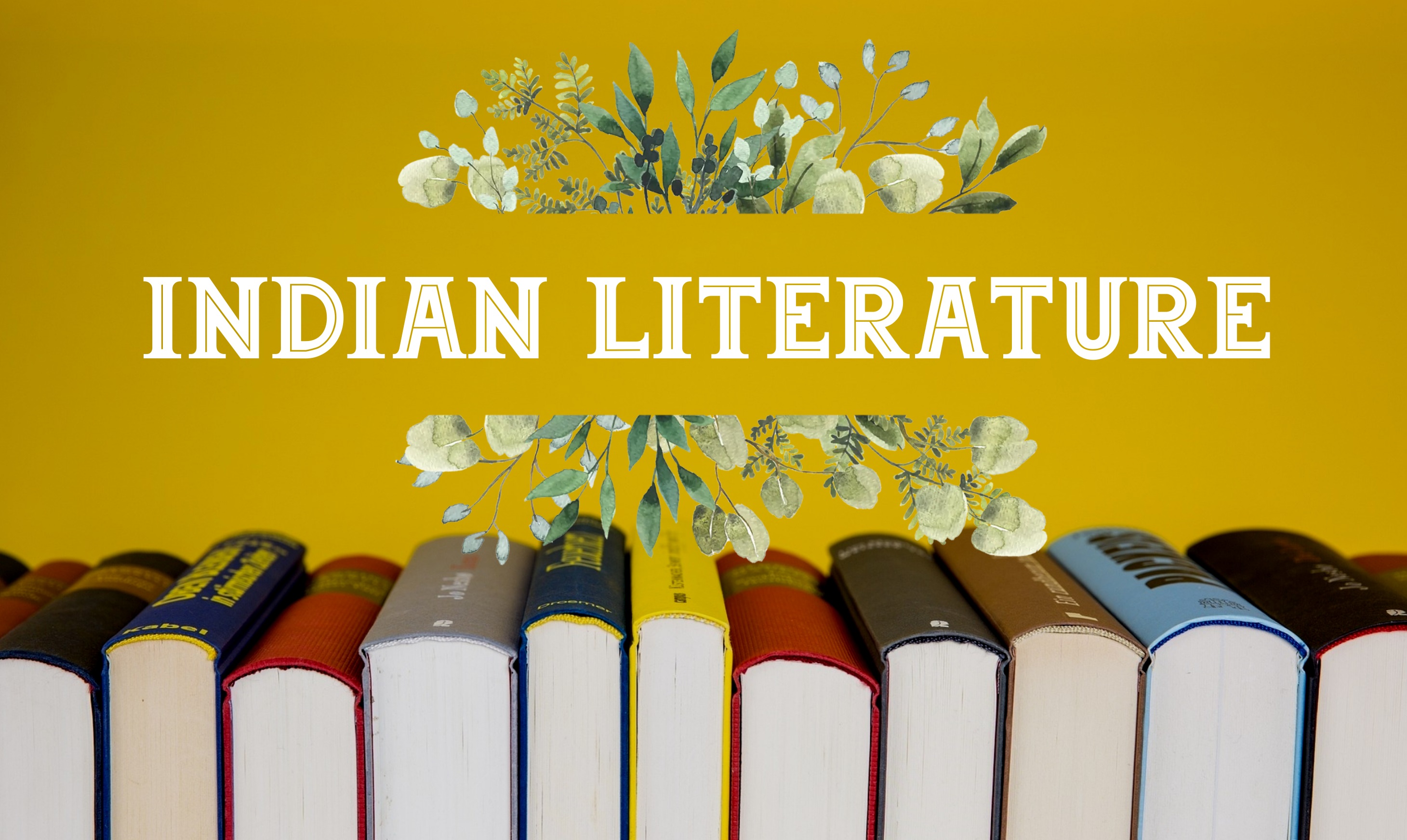The volume of water in Earth’s oceans, the U.S. Geological Survey tells us, is 321 million cubic miles. In litres, that is a number too large to contemplate. Trying to delve into the history of Indian literature is a little like trying to condense that volume of water into a single bottle. They say nothing is impossible though, so an effort, however sorry, must be made.
There are two primary difficulties in categorising Indian literature – the first is that so much of it was in the form of oral traditions rather than written, that dating when a work was first composed is impossible. Secondly, with ‘India’ being a legal construct barely 68 years old, there is difficulty in figuring out who and what should be considered a part of the Indian literary tradition. Therefore, the dating and inclusion of some of the texts to follow might be open to question, but I have tried to follow commonly-accepted norms for the same.
Nevertheless, it is commonly accepted that the Rigveda is the earliest literary composition to emerge from the land we call South Asia. Taking the form of religious scripture, the Rigveda, along with the Yajurveda, Samaveda and Atharvaveda are the most ancient Sanskrit literary works, dated between the periods 1,500 B.C. to 1,000 B.C. Over the period of the following two hundred years, the religious commentaries on the Vedas, viz. the Upanishads, Brahmanas, and Aranyakas were composed. The Puranas belong to a slightly later period, and are again in the nature of a religious text.
Image Source: Wikimedia Commons
Over the course of time from the 9th Century B.C. to the 1st Century B.C., the content of the writing had shifted to narrative stories with a reduced emphasis on scripture. Epic poems like the Mahabharata and the Ramayana dealt with the conduct of man, wars, and the flaws in society. Comprising, as always, oral traditions, the dating of these epics is uncertain, but they are estimated to have been formalised by the 2nd Century B.C. in a written form.
A number of works derived from these emerged in subsequent centuries, most notably by the poet-playwright Kalidasa, whose Raghuvamsa, Meghdoota, and Shakuntala have survived to the present day. Other poets writing in Sanskrit include Sriharsha, Bhasa, and Jayadeva as well as the oft-cited and rarely-read Kama Sutra by Vatsyayana.
But Sanskrit was not the only language of ancient India. In fact, it was only the language of the upper classes. The lingua franca of the masses was Prakrit and Pali, the languages in which spiritual leaders like Mahavir and the Buddha preached their teaching. While Prakrit was widely favoured by Jain scholars for composing their texts, prominent Buddhist texts such as the Jataka Tales, Dhammapada and Mahavamsa were composed in Pali. It is interesting to note that as Buddhism spread through South-East Asia and Sri Lanka, the use of Pali actually became more common in those countries than in the land of its origin.
Tamil literature is another tradition that has survived for close to two thousand years, making it nearly as old as Sanskrit (once again, accurate dating is virtually impossible). The Tolkappiyam, a text on Tamil grammar is the earliest known work in that language, and is at least as old as the non-Vedic Sanskrit works mentioned above. The period spanning the 3rd century B.C to the 3rd Century A.D. saw a profusion of secular works, mostly in poetic form, called the Sangam period. In later years, Tamil literature evolved from a secular to a more religious tone, with Shaivite and Vaishnavite factions publishing their own takes on the religious scriptures of the time.

Image source: ancient-origins.net
By the time corresponding to the Dark Ages in Europe, the Indian sub-continent was evolving into a linguistically-diverse region, and literature, mostly religious in nature, was being produced in languages including Telegu, Kannada, Bengali, and the precursors to modern Hindi and Assamese.
The next major cultural upheaval after the emergence of Buddhism, however, was the conquest of most of North India by the Persians and later, the Mughals. Amir Khusrau is a name that stands tall as one of the finest exponents of Persian poetry. In later years, the Urdu language, an amalgam of the Persian of the courts and the Hindi of the masses would become the language of poets like Mirza Ghalib and the last Mughal – Bahadur Shah Zafar, whose poetry was evidently better than his handling of what little authority he had.
By the fourteenth century, Marathi was emerging as the language of central and western India, with the composition of the Dnyaneshwari by Dnyaneshwar. Poet-saints like Tukaram, Ramdas, and Eknath continued the tradition, and with the political rise of the Marathas, the language gained prominence as well.
As the British control over India spread and engagement with European literary traditions increased, forms like novels and short stories became more popular. Chandrakanta by Devakinandan Khatri is the first novel written in Hindi, while Munshi Premchand raised short-story writing to a level rarely matched since. Several poets like Nirala, Dinkar, Dharamveer Bharati, and Harivanshrai Bachhan dominated the literary scene of pre-Independence India. Regional languages were equally active, as increased penetration of education throughout the country brought about an explosion of creativity. From Rabindranath Tagore to Mahashweta Devi, from PK Atre to Sadat Manto, Indians were writing the stories of their time, of their generation.
Some of the greatest writing of the period in the last century or so before independence was however carried out in Bengal, where first the influx of western thought brought in by the fact that the East India Company and later the Empire had their capital at Calcutta, and later by the patriotic fervour of the freedom struggle, influenced writers like Madhusudan Dutt, Bankim Chandra, Sarat Chandra. The greatest contemporary writer-poet of India, Rabindranath Tagore, also wrote primarily in Bengali, though his legacy belongs more fittingly, to the country as a whole.
Image source: Hindustan Times
The period after Independence saw the emergence of a new phenomenon – Indian writing in English. While several scholars had written in the languages of their colonial masters before, it was the likes of Salman Rushdie who first brought the English novel with a distinctly Indian feel into the world. Vikram Sheth, Amitav Ghosh, Rohinton Mistry, and many others continue to burnish India’s reputation as a country of exceptional literary talent to the world. In recent years, there has been an explosion of writing by Indians in English, taking away from the attention that perhaps more meritorious writing in vernacular languages might deserve.
For all that, from the strictures of the Manu Smriti to the crying out of the discriminated-against in Arundhati Roy’s The God of Small Things, from Valmiki’s story of an Indian prince conquering Sri Lanka to Jhumpa Lahiri’s poignant stories of the Indian diaspora dealing with displacement and loss in foreign lands, it would be fair to say that a long distance has been traversed, and in this, our literary traditions, lies the roots of our culture – mostly good, sometimes bad, occasionally ugly.
To read these works, to understand them in all their diversity, is as important now as it ever was, at a time where culture is in danger of being appropriated to a single, exclusionary narrative. The ocean might remain too vast to be contemplated, but I can only hope my efforts through this essay have brought forth it’s effervescent, sometimes-turbulent nature.


Comments